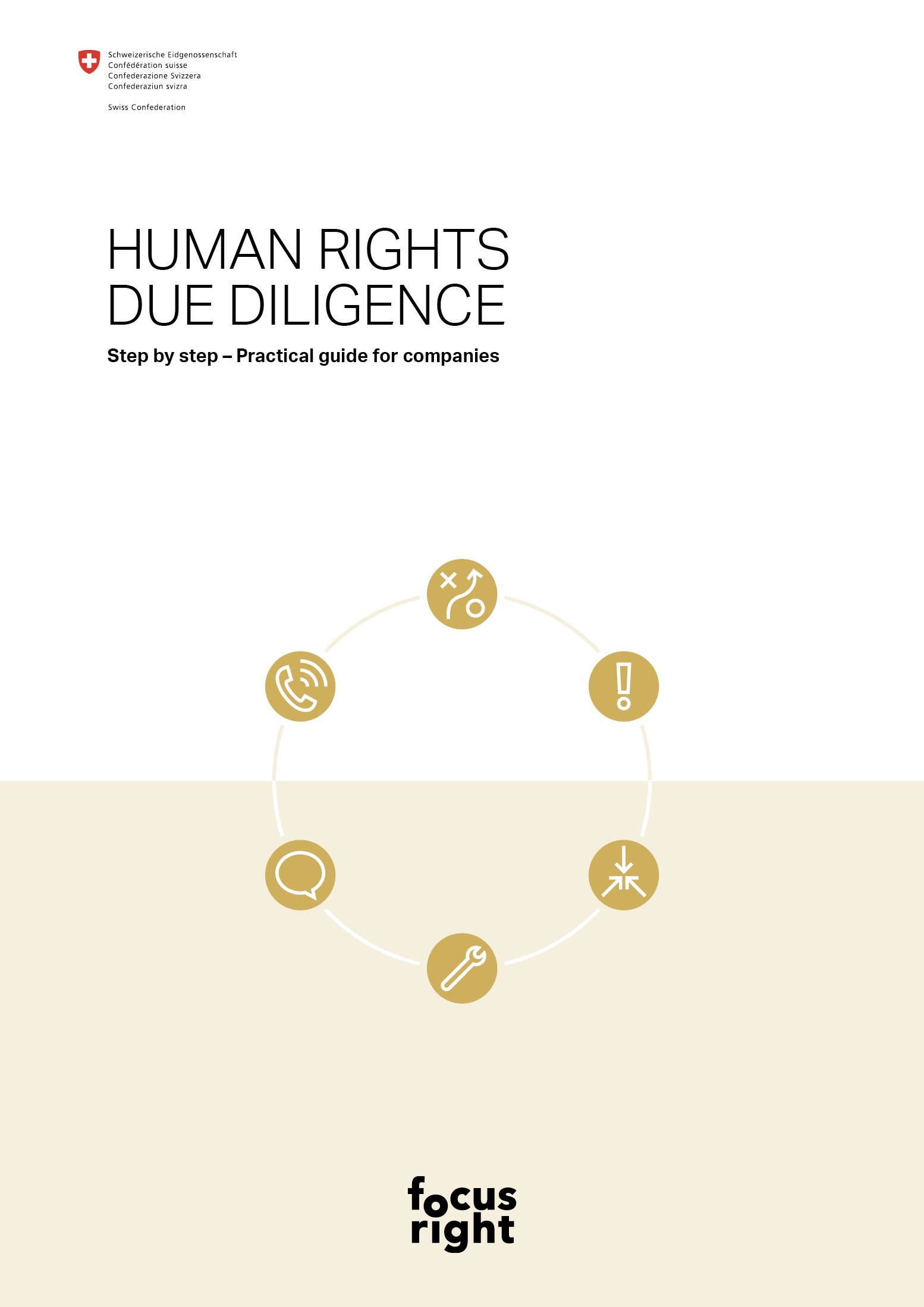"We support companies to embed human rights due diligence"
OVERVIEW
A management system for human rights
Human rights due diligence (HRDD) is a management system that allows companies to proactively assess their human rights risks and impacts and take appropriate measures to address them. Rooted in the UN Guiding Principles on Business and Human Rights (UNGPs), HRDD aims to avoid and manage negative impacts on human rights associated with a company’s operations and business relationships. This concept is increasingly being expanded to include environmental considerations and is now often referred to as human rights and environmental due diligence (HREDD). This broader approach reflects the growing recognition of environmental impacts on human rights. Legal frameworks, such as the EU Corporate Sustainability Due Diligence Directive (CSDDD), require companies to implement HREDD.
Click on the links below to know more about the six steps of due diligence in line with the UNGPs:
International Standards: UN Guiding Principles and OECD Guidelines
The world is changing rapidly, creating new opportunities but also challenges for companies. Globalization, increased transparency of supply chains, digitalization, changing consumer and investor expectations, war for talents and other developments are impacting future business success.
In 2011, the United Nations adopted the United Nations Guiding Principles on Business and Human Rights (UNGPs) to guide companies in this changing landscape. They have since become the internationally recognized framework providing a blueprint for concrete steps businesses should take to respect human rights (human rights due diligence). Many national action plans (NAPs) on business and human rights, legal frameworks (e.g. EU Corporate Sustainability Due Diligence Directive (CSDDD), Swiss Counter-Proposal to the Responsible Business Initiative, German Supply Chain Due Diligence Act (LkSG), UK Modern Slavery Act), international standards and initiatives (e.g. OECD Guidelines for Multinational Enterprises and UN Global Compact) now refer to the UNGPs.
The UNGPs apply to all companies, regardless of their size, industry or risk level. They encompass all international human rights and cover a company’s own operations, whole value chain and all business relationships. They do not expect companies to fully control and avoid every single one of their adverse impacts. Instead, they expect companies to prevent adverse human rights impacts wherever possible, and address and remediate the impacts that have occurred.
Your questions
From our experience working within companies, we are familiar with the types of questions that arise when human rights and environmental due diligence comes onto the agenda. To read our answers, click on the questions below:
Board Member
“What does it mean to implement due diligence?”
Chief Financial Officer
“How can I get started?”
Benefits of a systematic approach to due diligence
Implementing due diligence as outlined in the UNGPs allows companies to take a systematic approach to human rights management. This contributes to generating a higher and more sustainable added value for businesses in various ways:
It leads to compliance with existing and upcoming due diligence laws
It is part of operational risk management, as costly legal disputes, remediation action and reputational harm are identified and prevented
It builds trust with key stakeholders, including business partners, clients, and investors who increasingly expect companies to respect human rights
It improves the reputation which has a positive influence on brand value, employee satisfaction and retention
It increases the likelihood to win public tenders that take into account responsible business conduct or human rights and environmental due diligence
It leads to higher scores in ESG ratings or sustainability benchmarks, which in turn improves the company’s reputation and access to capital
It allows for a strategic approach to manage and improve the social dimension of ESG
Credible contents for the development of a convincing sustainability report










